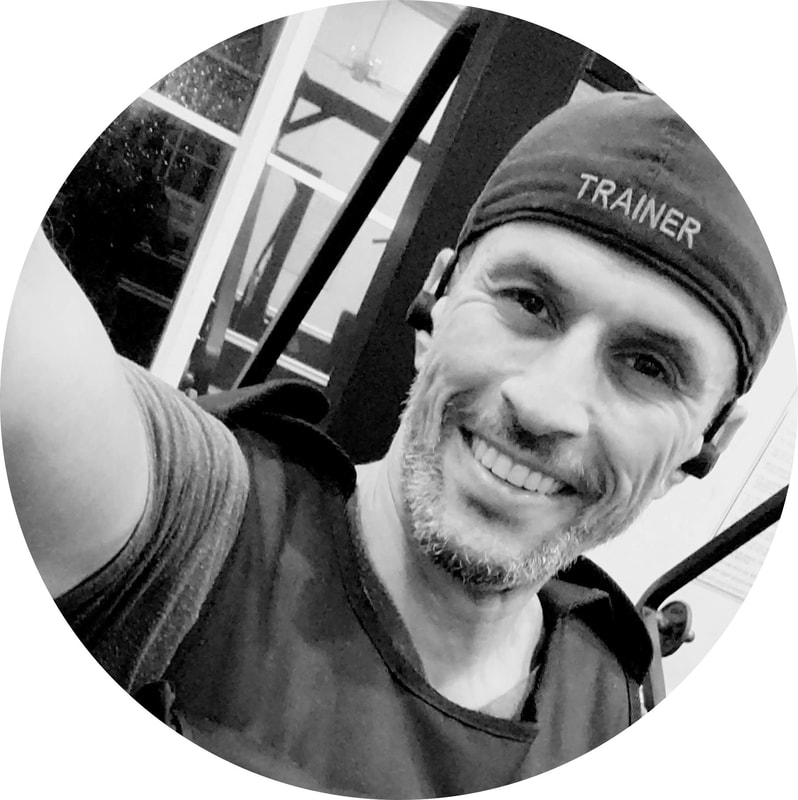|
If the muscles in your body hurt, would you know if the cause is muscle soreness or muscle strain? I put together the below table to help you identify the pain type and what you can do to help relieve it... OTHER KNOWN TERMS: Muscle Soreness: Delayed Onset Muscle Soreness (DOMS) or Muscle fever. Muscle Pain: Muscle pull, Pulled muscle, or Muscle tear. WHAT IS IT: Muscle Soreness: Microscopic tears in the muscle fiber caused by an eccentric new activity like weight lifting, new cardiovascular exercise like walking or running, heavy work load, extended house work, repetitive lifting, bending, pushing, etc. Muscle Pain: An injury to a muscle or tendon as a result of excessive over stretching. It can happen while performing regular routine tasks. SYMPTOMS: Muscle Soreness: Dull, aching pain sometime combined with tenderness or stiffness. Muscle Pain: Swelling, bruising, redness.Can be painful at rest. Inability to use the muscle WHEN DO YOU FEEL IT: Muscle Soreness: Can ONLY be felt when the affected area is contracted or stretched, but not at rest. 24-48 hours after the exercise / activity. Some can feel it as soon as 12 hours. Muscle Pain: 2 Types - Acute Strain: Happens when there is a SUDDEN excessive pull on the muscle. You will feel it immediately. Chronic Strain: Happens over a longer period of time and results from repetitive movement of the same muscle. HOW TO TREAT IT: Muscle Soreness: Stretching. Light message. Consult your physician on the use of non-steriodal anti-inflammatory drugs (NSAIDs) like aspirin or ibuprofen to help alleviate the pain. Muscle Pain: Severe muscle strains, which usually have significant swelling, a "popping" sound when the injury happened, a complete inability to move, and maybe an open wound will require an immediate medical attention. Mild muscle strains can be treated by following R.I.C.E: Rest: rest the strained area and avoid moving it. Ice: apply ice packs to the affected area. 20 minutes on every hour. Use frozen vegetable bags if ice packs are not available. Compression: apply lightly with an elastic bandage. Do not wrap tightly. Elevation: elevate the injured area to reduce swelling. Consult your physician on the use of non-steriodal anti-inflammatory drugs (NSAIDs) like aspirin or ibuprofen to help alleviate the pain. HOW LONG BEFORE IT GOES AWAY: Muscle Soreness: Pain should substantially subside 72-96 hours after the exercise / activity. Muscle Pain: Consult a physician for any muscle pain lasting more than a week. A moderate tear of the muscle can take up to 6 weeks to recover. Severe tears need to be evaluated by a doctor and may require surgery to reconnect the torn tissue. HOW TO PREVENT IT: Muscle Soreness: Once you experience muscle soreness due to a new activity, you shouldn't experience the same soreness again if the activity is repeated. Only if intensity is increased or you haven't performed that activity again for a long period of time. That being said, not feeling sore after a good exercise DOES NOT mean that you did not exercise hard enough. It simply means your muscles are more adapted to that specific work load. A gradual increase in intensity should help ease future muscle soreness. Muscle Pain: Consider how the injury occurred in the first place. Areas most susceptible to muscle pull are hamstrings and back. Consider a strength training program to strengthen the area after complete recovery. Stretching more often also helps increase muscle flexibility and may help avoid injury. IMPORTANT: The information in this table is meant to illustrate the difference between muscle soreness and muscle strains. It’s not a substitute for examinations, diagnosis, and medical care provided by a licensed and qualified health professional. There are other conditions that can cause muscle pain like infections (the flu) or disorders like Lupus and Fibromyalgia. Always consult your doctor if you have a persistent or unexplained pain. I hope you find this table helpful. Don't forget to check out my new eBook: 3 OR LESS STRETCHING GUIDE, a simplified guide to help you learn effective stretching techniques in 3 moves or less. BUSINESS COPIES: Do you want a copy of this post for your business? Download a Printer-Friendly, royalty-free, life-time print license and add your business information to the article! Great way to promote your business! See below for details! As always, please do not hesitate to reach me with any questions, comments, or concerns. Happy Healthy Transformation Your Trainer, Rami
2 Comments
Denyse Weaver
4/30/2014 02:49:14 pm
Very helpful info for what i thought might be a strained or torn quad after a tough normal curcuit class...never would have kniwn that cold and stretch is recommended. I would have thought the opposite.
Reply
Rami Aboumahadi
4/30/2014 03:01:13 pm
Thank you Denyse. I am glad you found this blog helpful. Yes! The cold helps reduce any possible inflammation thus speeding up the recovery.
Reply
Your comment will be posted after it is approved.
Leave a Reply. |
�
Topics
All
Guest ContributorsBuy Me Coffee |



 RSS Feed
RSS Feed

